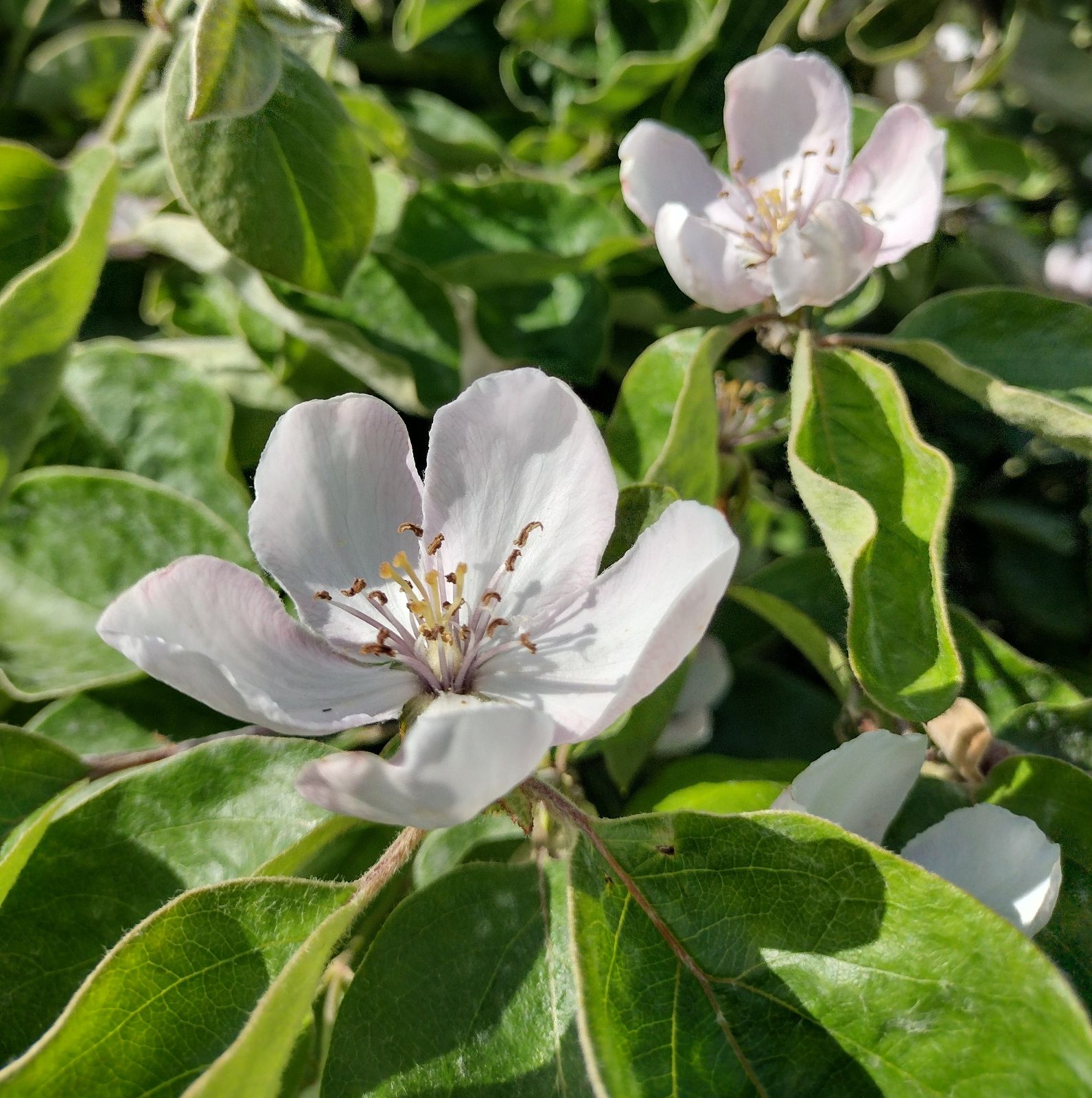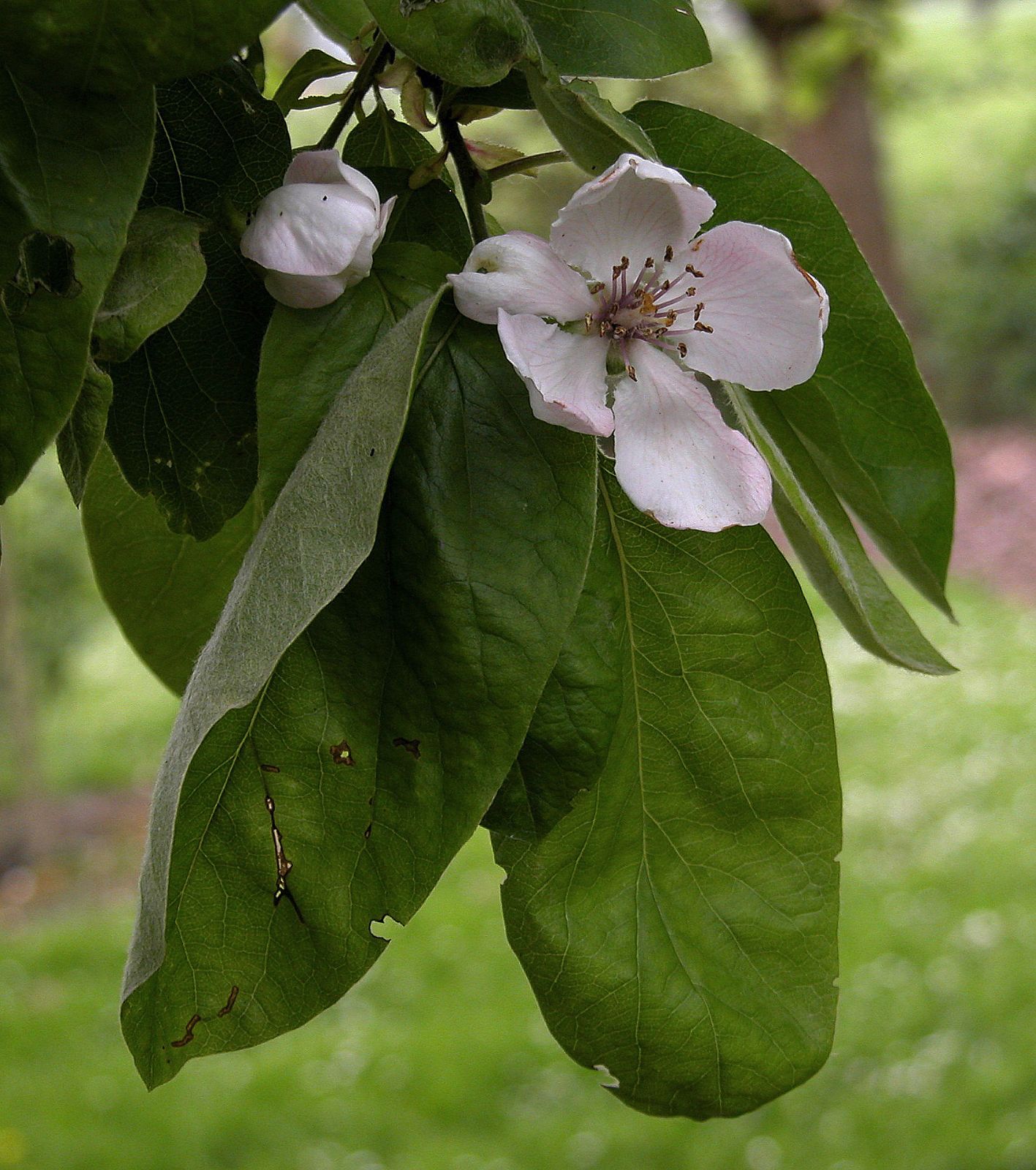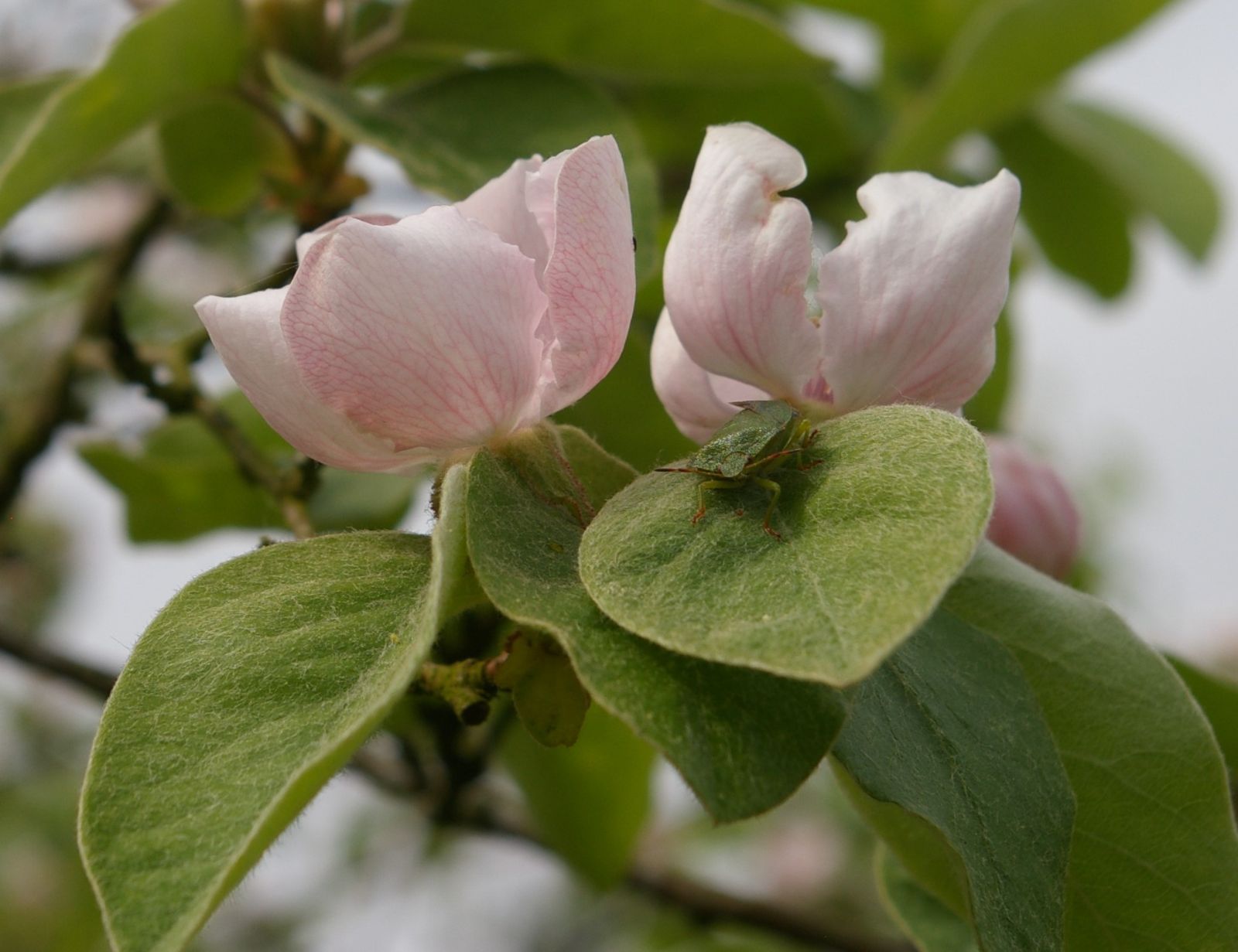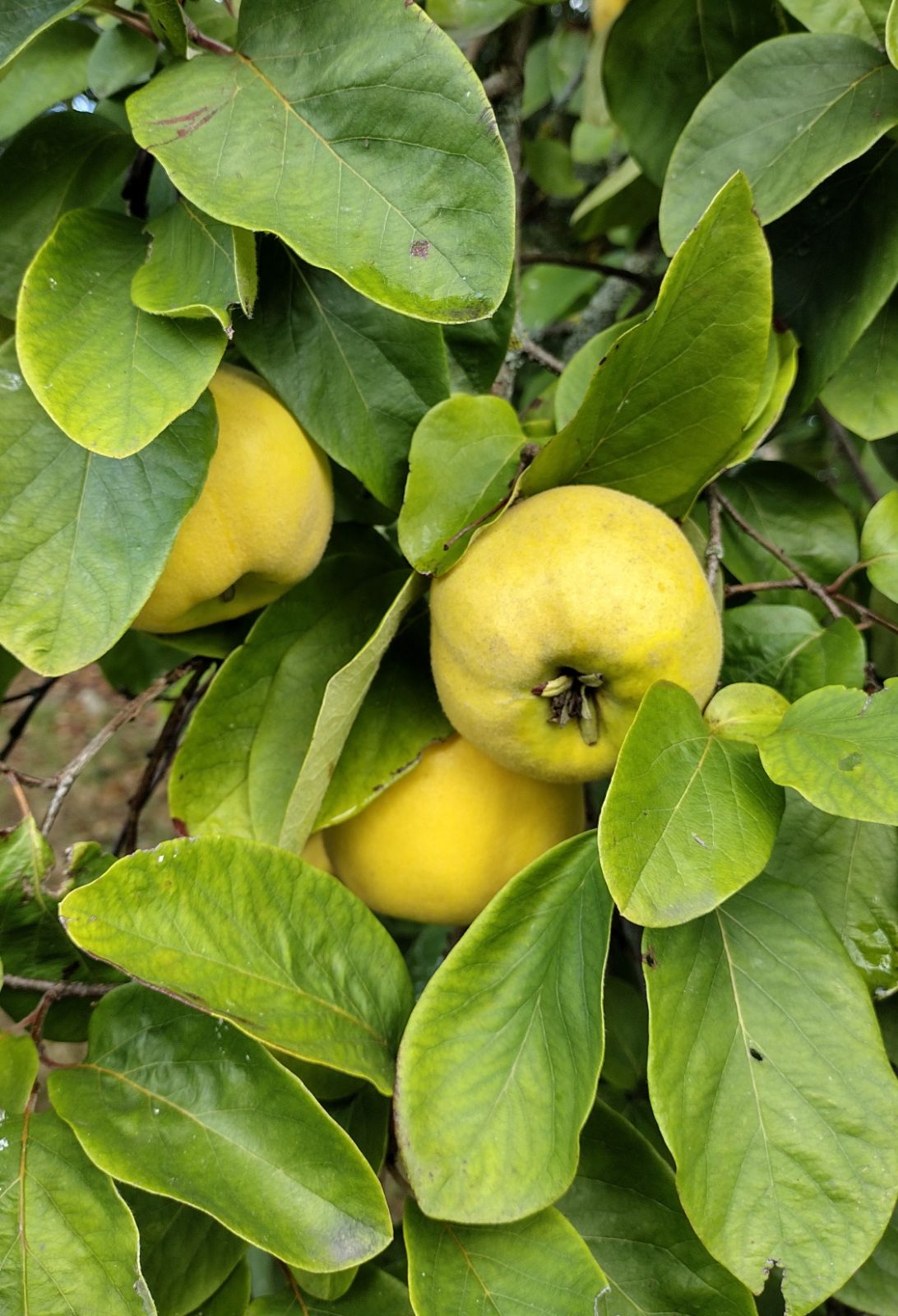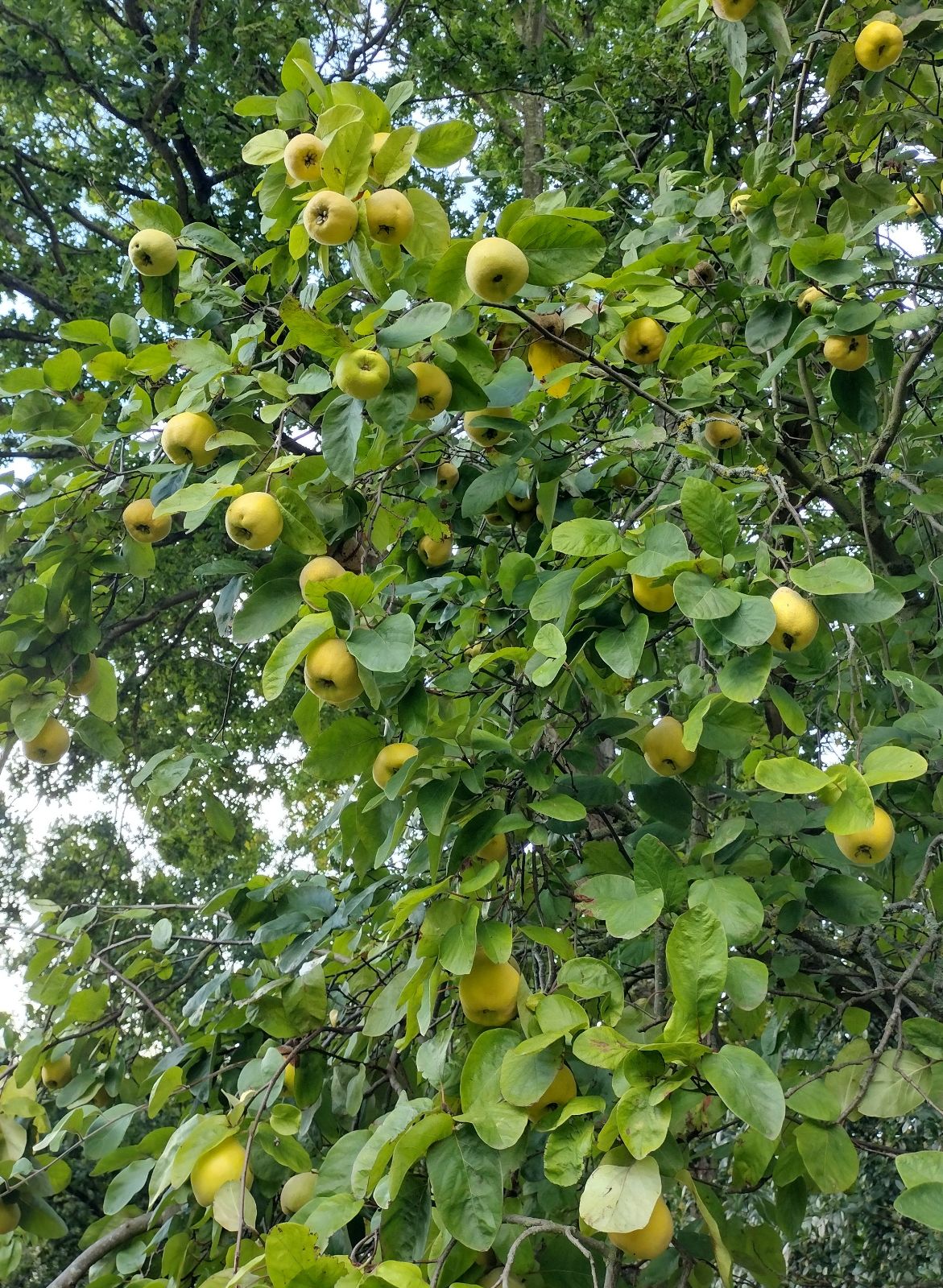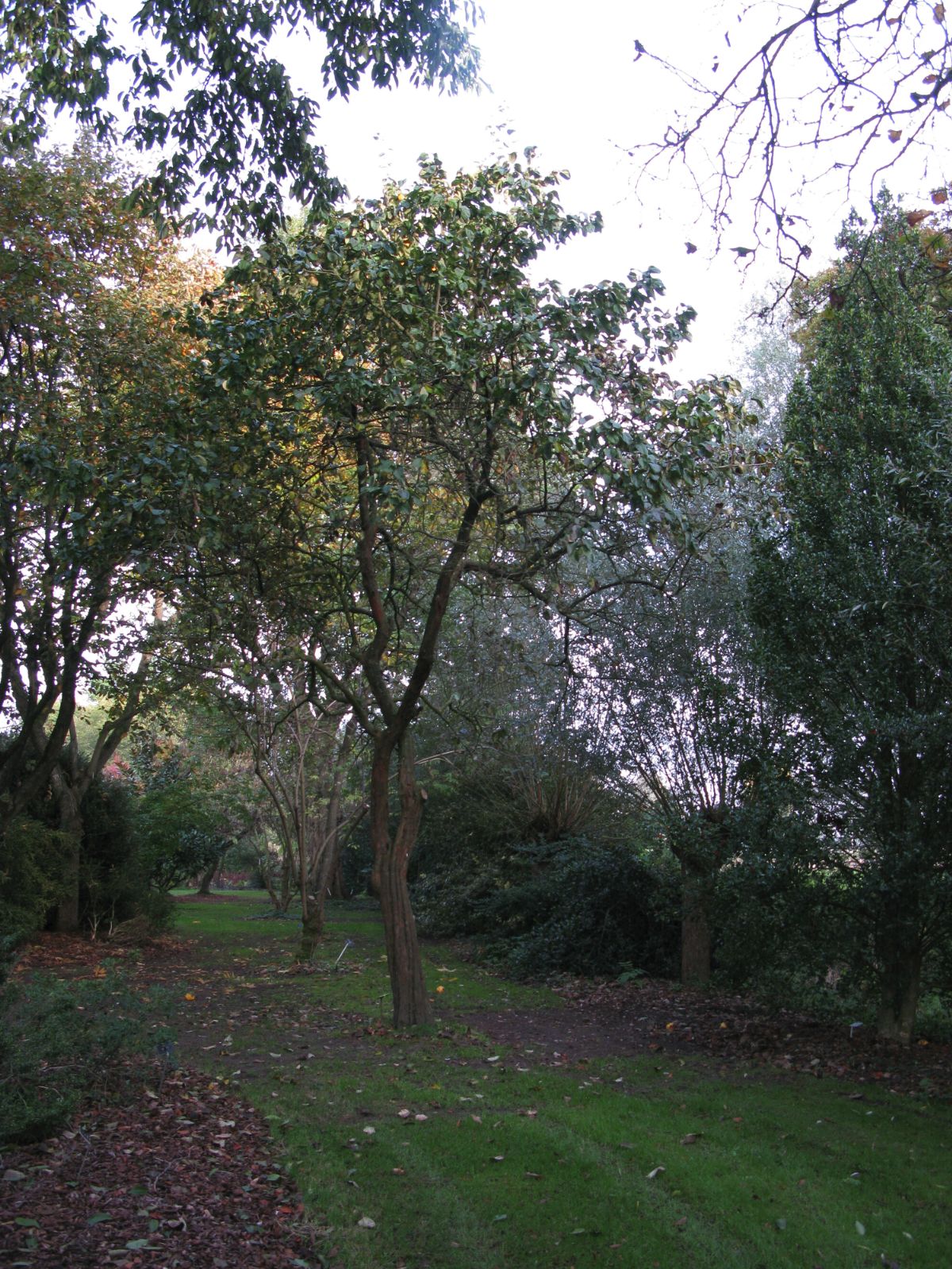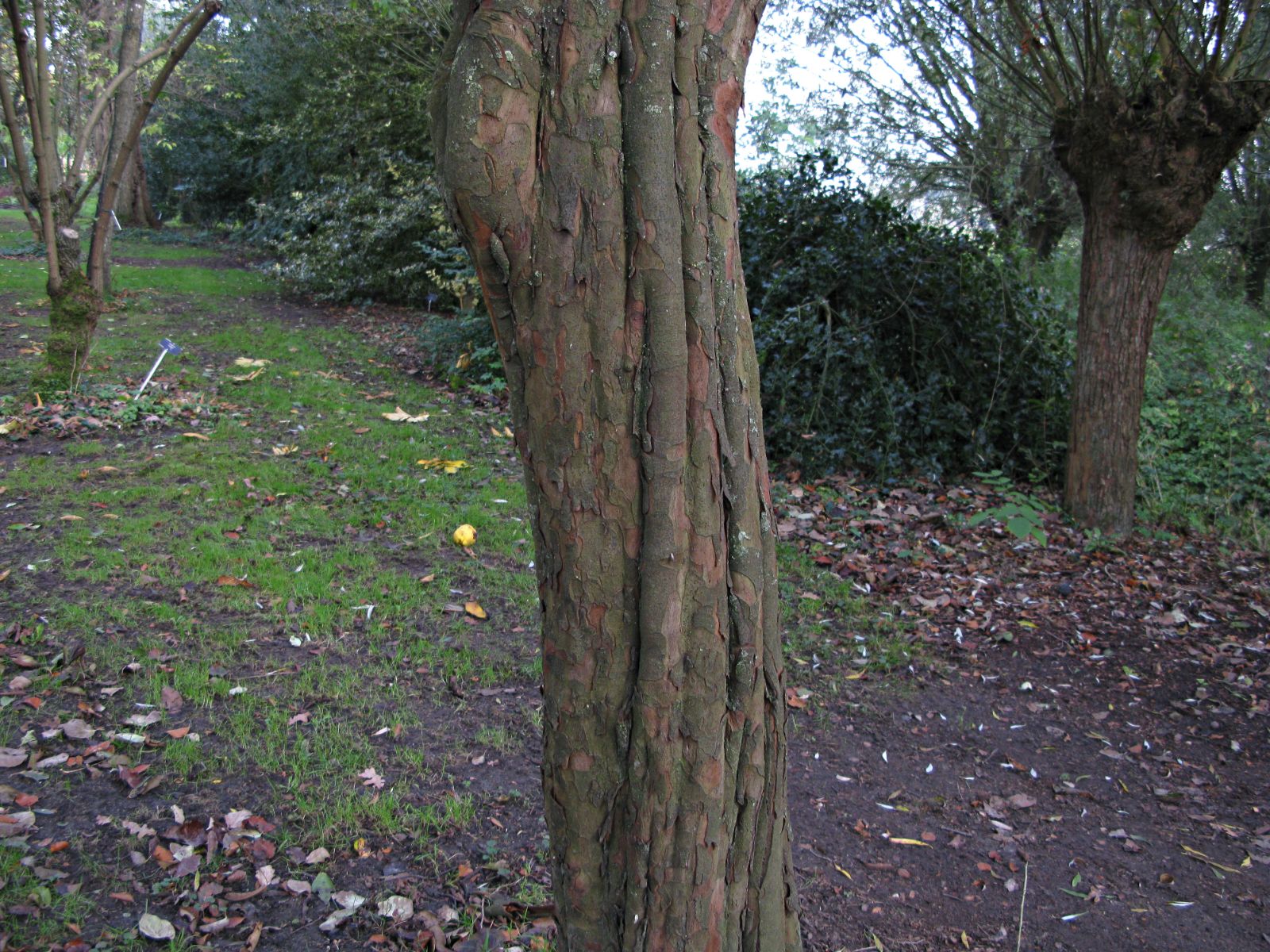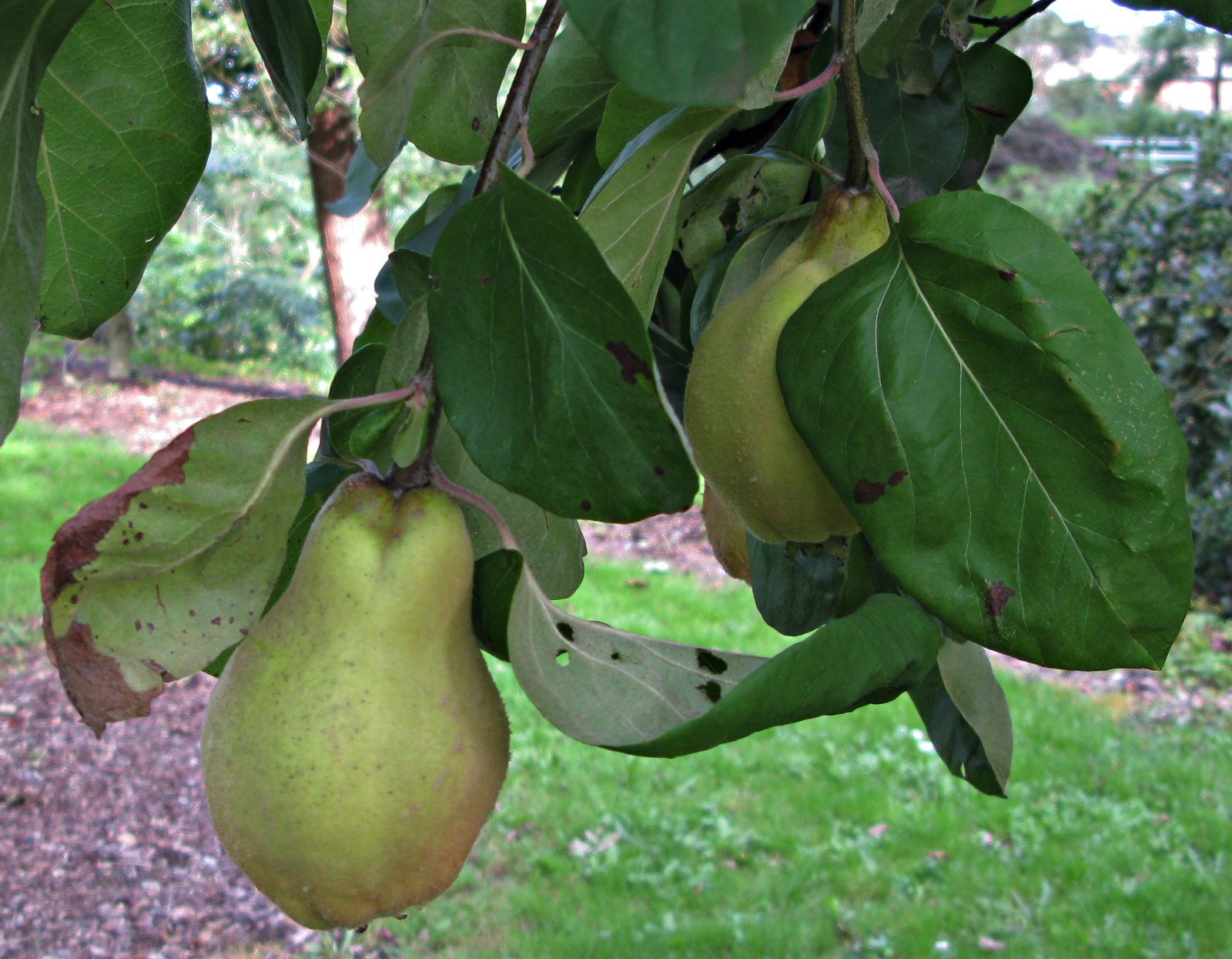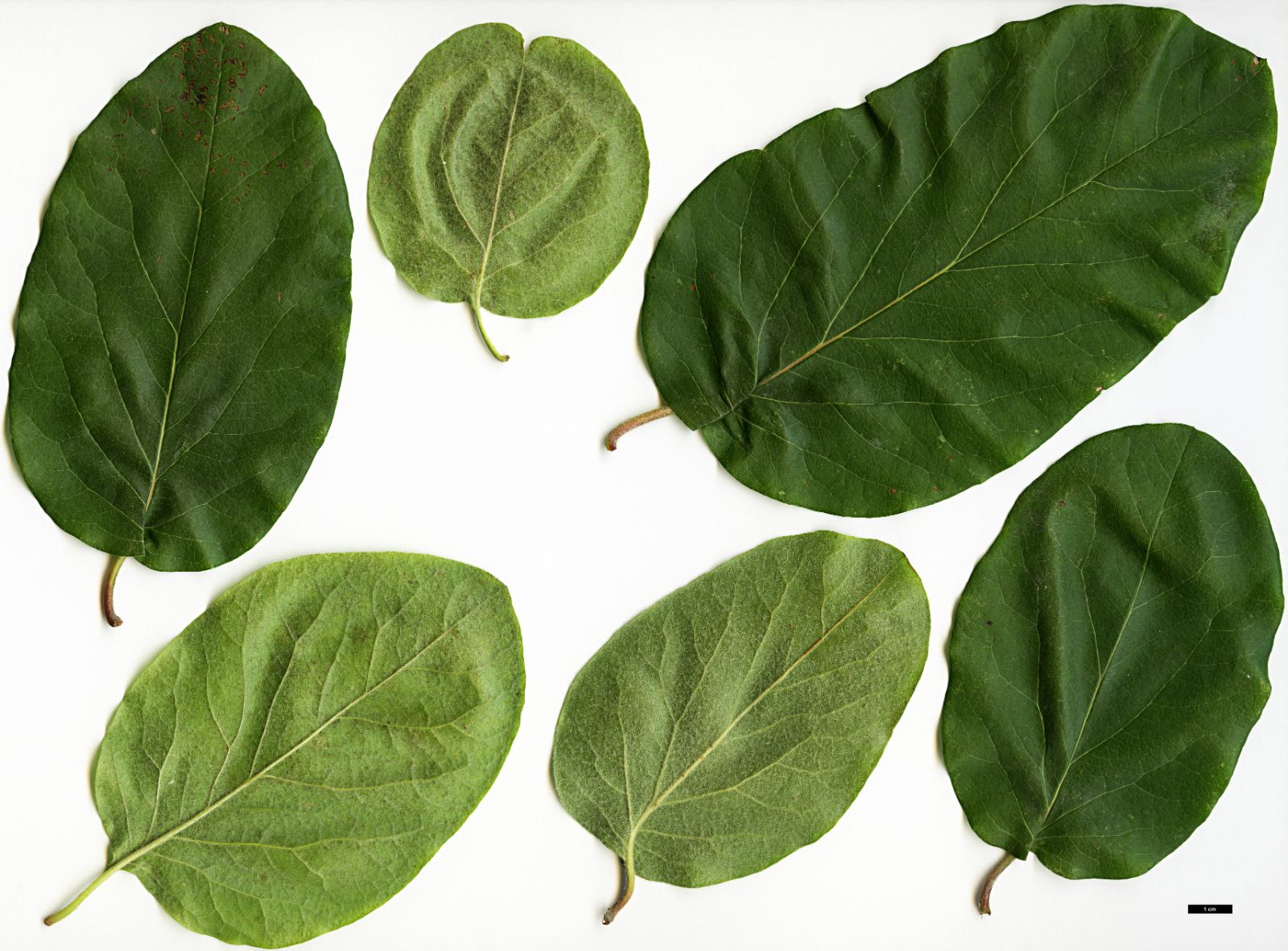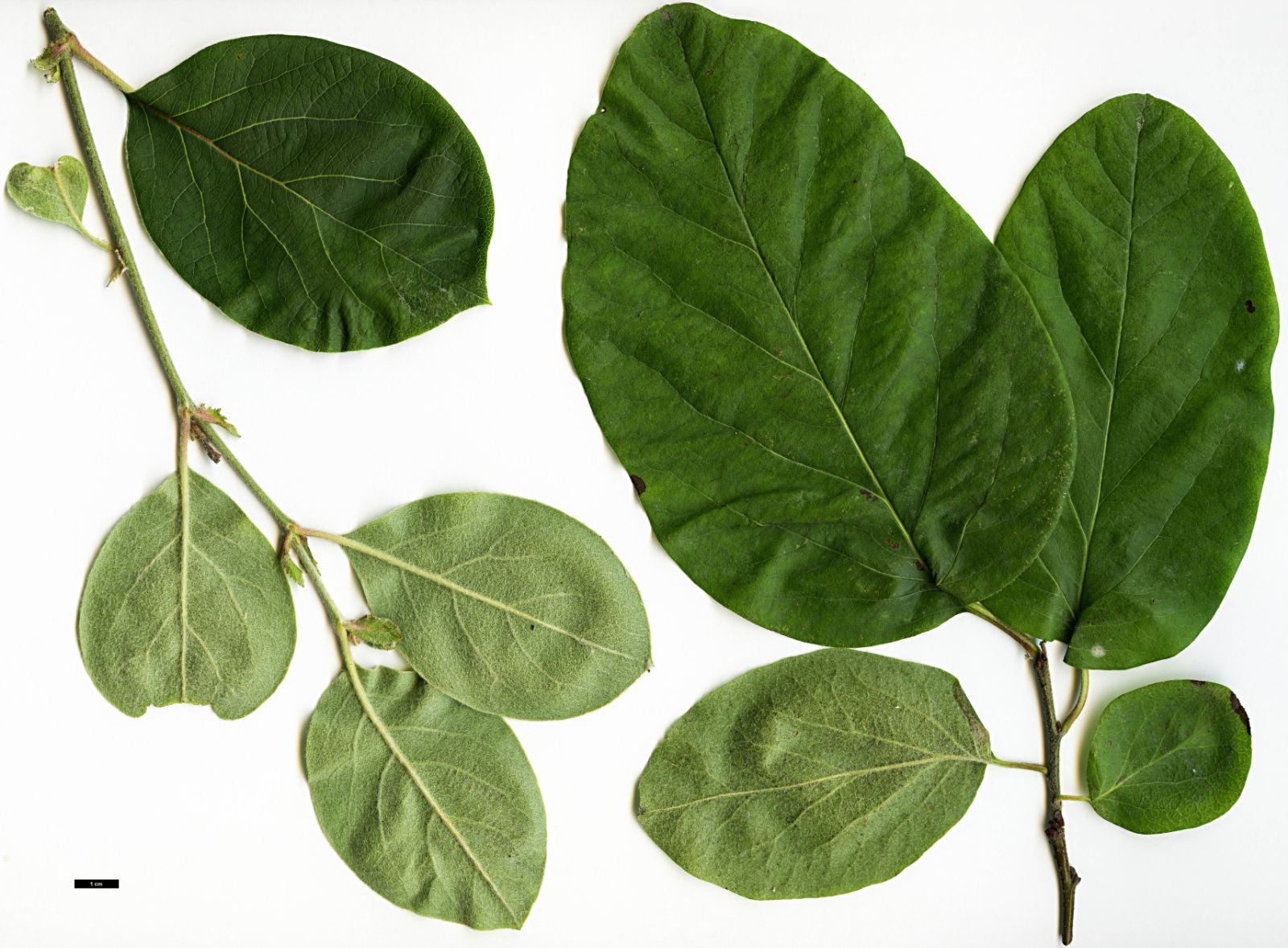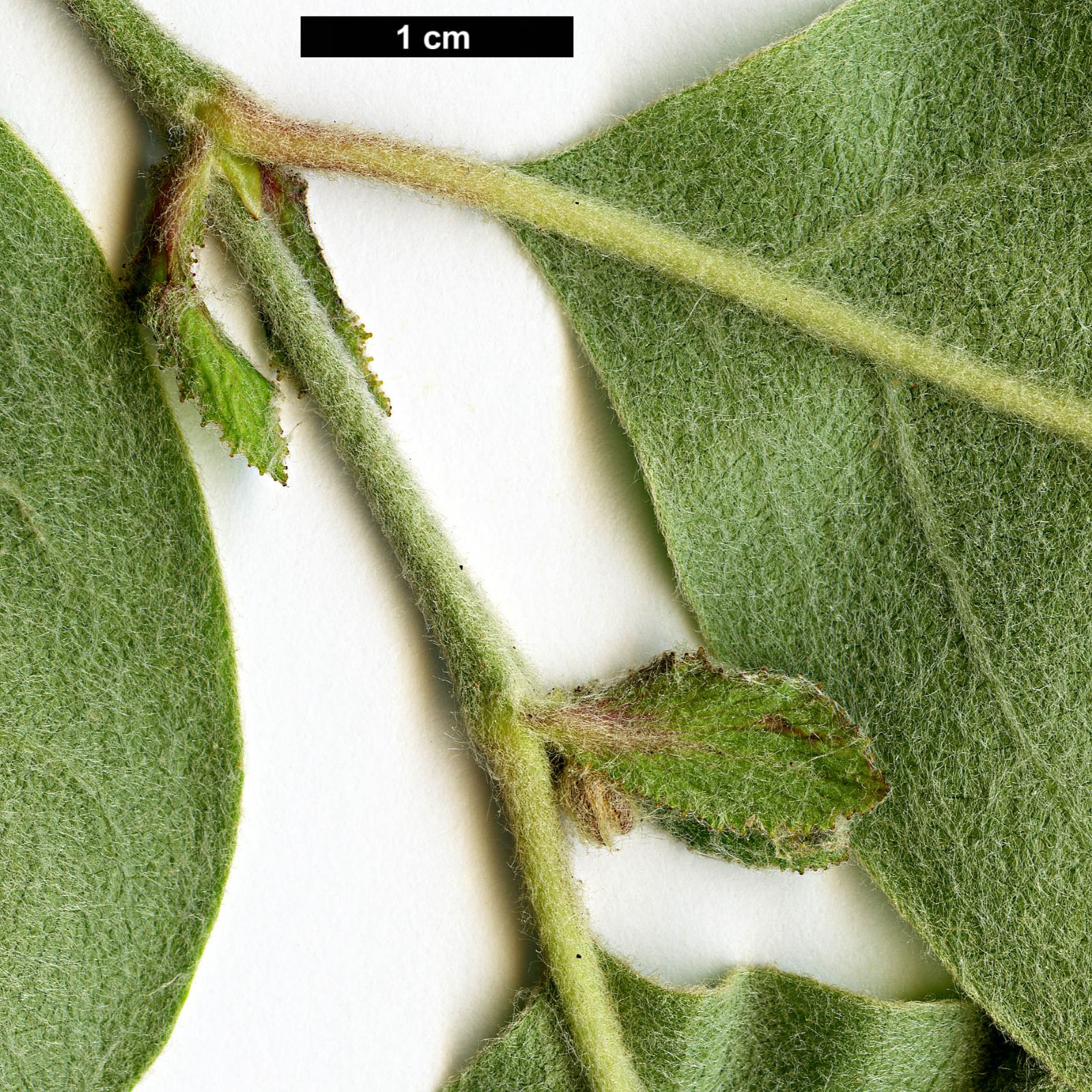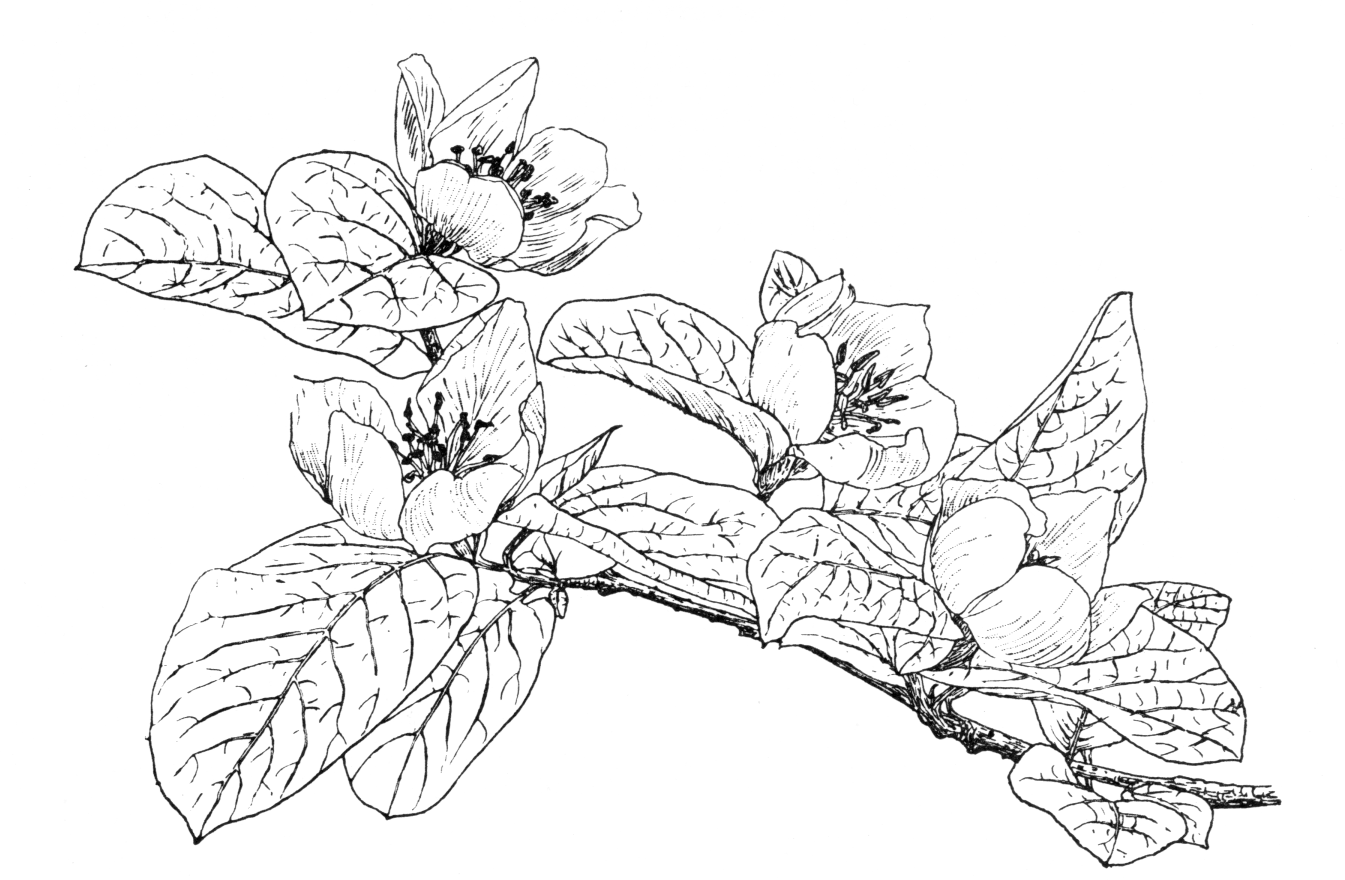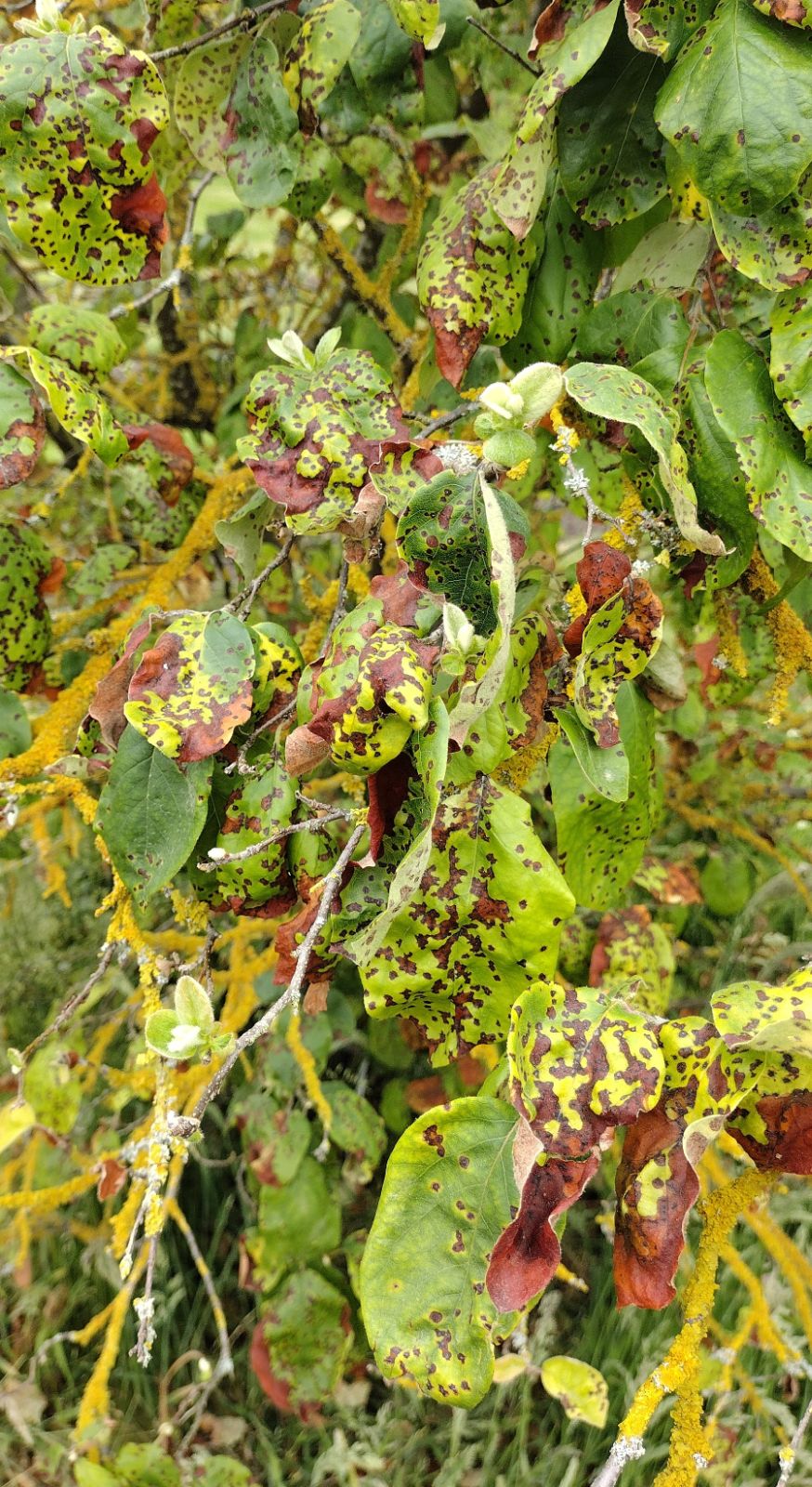Cydonia oblonga
Credits
Article from Bean's Trees and Shrubs Hardy in the British Isles
Recommended citation
'Cydonia oblonga' from the website Trees and Shrubs Online (treesandshrubsonline.
A deciduous, thornless tree, 15 to 20 ft high, with crowded branches and a low quaint habit; young branchlets covered with greyish wool. Leaves ovate or elliptical, 21⁄2 to 4 in. long, 13⁄4 to 21⁄4 in. wide, not toothed, dark green above, pale with a dense felt of grey wool beneath, especially when young; stipules hairy, glandular. Flowers 2 in. across, pink or white, each one solitary at the end of a short twig, produced during May. Fruit light golden yellow, pear-shaped, very fragrant.
The native country of the quince, like that of some other commonly cultivated plants, is not definitely known, but most probably it is wild only in parts of the Near East and Central Asia. It has been cultivated in the lands bordering the Mediterranean from time immemorial and has become naturalised in many parts; it was introduced to Britain at an early date.

